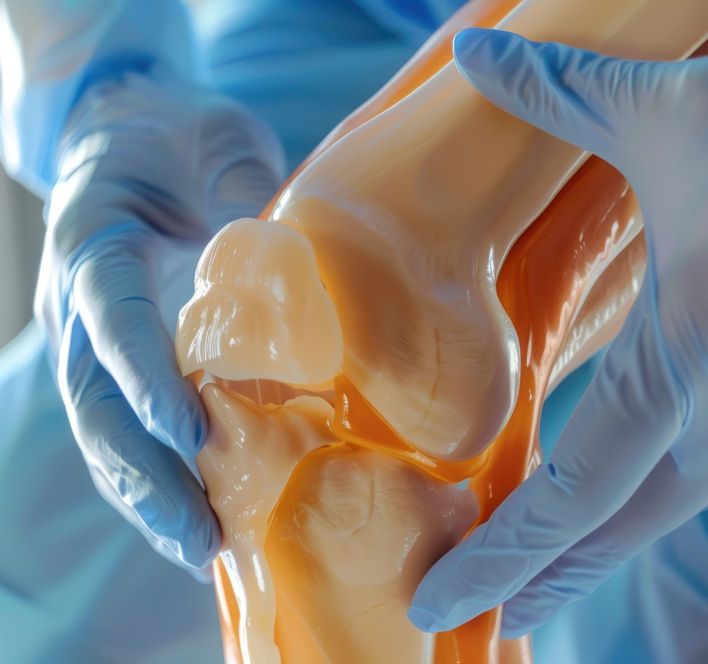Experiencing pain and swelling around your joints can be distressing and disruptive to your daily life. This discomfort might be due to bursitis, an inflammation of the bursae, or it could require a more invasive solution like a bursectomy. Understanding the difference between these two conditions and their respective treatments can help you make informed decisions about your health.
NJ Spine & Orthopedic is dedicated to helping patients understand their conditions and explore treatment options. Our award-winning team offers a comprehensive range of services to address both bursitis and the need for bursectomy, ensuring you receive the best possible care. If you’re experiencing joint pain and swelling, we are here to provide the knowledge and treatment you need to regain your quality of life.
What is Bursitis?
Bursitis is the inflammation of the bursae, small fluid-filled sacs that cushion the bones, tendons, and muscles near your joints. This condition commonly affects the shoulder, elbow, hip, and knee, causing pain and limiting movement. Bursitis can result from repetitive motion, prolonged pressure, or sudden injury, making certain activities and occupations more likely to trigger it.
Symptoms of bursitis include joint pain, tenderness, swelling, and warmth around the affected area. These symptoms may worsen with movement or pressure, significantly impacting your daily activities. If left untreated, bursitis can lead to chronic pain and reduced mobility, emphasizing the importance of early intervention and proper treatment.
Treatment for bursitis typically involves rest, ice, compression, and elevation (RICE), along with anti-inflammatory medications to reduce pain and swelling. Physical therapy may also be recommended to strengthen the muscles around the joint and improve flexibility. In severe cases, corticosteroid injections or aspiration of the excess fluid from the bursa may be necessary to alleviate symptoms.
What is a Bursectomy?
A bursectomy is a surgical procedure that involves removing the inflamed or damaged bursa. This treatment is usually considered when conservative methods fail to provide relief or when the bursa becomes chronically infected. The goal of a bursectomy is to eliminate the source of pain and inflammation, allowing for improved joint function and a return to normal activities.
During a bursectomy, the surgeon makes a small incision near the affected joint and carefully removes the bursa. Minimally invasive techniques, such as arthroscopy, are often used to reduce tissue damage and promote faster recovery. The procedure typically takes about an hour, and patients can often go home the same day.
Recovery from a bursectomy involves rest, physical therapy, and gradually returning to normal activities. Most patients experience significant pain relief and improved joint function within a few weeks. However, it’s essential to follow your surgeon’s post-operative instructions to ensure a smooth and successful recovery.
Comparing Bursectomy and Bursitis
Understanding the relationship between bursitis and the need for a bursectomy is crucial for making informed decisions about your treatment. Bursitis is an inflammation that can often be managed with conservative measures, while a bursectomy is a surgical option for more severe or persistent cases.
The primary goal in treating bursitis is to reduce inflammation and alleviate pain through non-surgical methods. This approach allows many patients to recover fully without the need for invasive procedures. However, when bursitis becomes chronic or fails to respond to treatment, a bursectomy may be recommended to provide lasting relief.
It’s important to work closely with your healthcare provider to determine the best course of action for your specific condition. They will consider factors such as the severity of your symptoms, your overall health, and your response to previous treatments. By understanding the differences between bursitis and bursectomy, you can better navigate your treatment options and achieve the best possible outcome.
Seeking Treatment at NJ Spine & Orthopedic
If you are struggling with joint pain and suspect bursitis, or if you’ve been advised to consider a bursectomy, NJ Spine & Orthopedic can help. Our team is committed to providing personalized care to address your unique needs. We use the latest technology and minimally invasive techniques to ensure effective treatment and faster recovery times.
Patients from across the nation come to NJ Spine & Orthopedic for our comprehensive concierge services, which include coordinating travel and accommodations for those who need it. Our dedicated team is here to support you every step of the way, from diagnosis to recovery, ensuring you receive the highest quality care.
Why Choose NJ Spine & Orthopedic for Your Bursectomy or Bursitis Treatment?
At NJ Spine & Orthopedic, we understand the impact that joint pain can have on your life. Our experienced team of board-certified surgeons, neurologists, and orthopedic specialists works together to provide the best possible outcomes for our patients. We are dedicated to using state-of-the-art technology and minimally invasive techniques to reduce discomfort, minimize scarring, and promote faster recovery.
If you’re dealing with bursitis or considering a bursectomy, we are here to help you understand your condition and explore the most effective treatment options. Contact us today at (866) 553-0612 or visit our contact form to schedule a consultation and take the first step toward relief.

